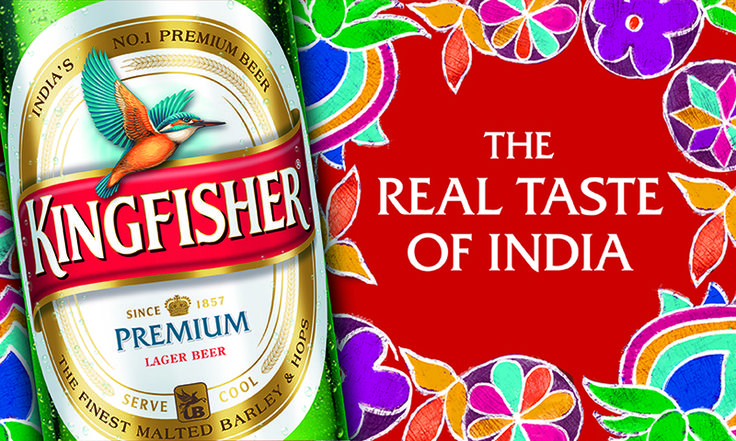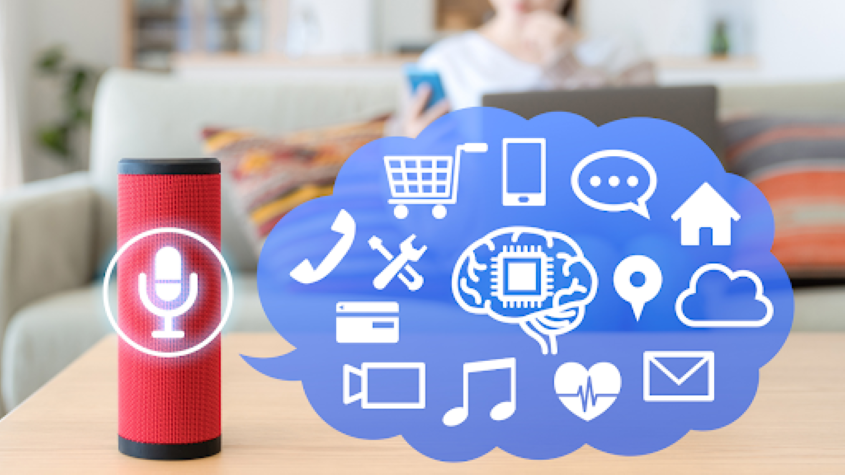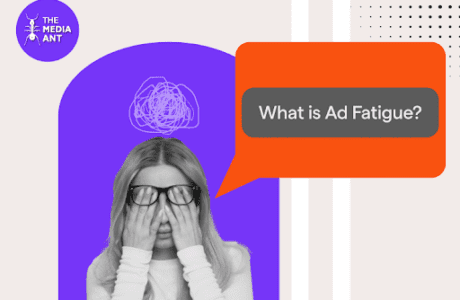The idea of the internet as the primary medium of advertising is still relatively new, and with the rapid advancement of technology, the world of advertising is changing before our very eyes. Print media placed on billboards and other physical structures are slowly being cleared to provide room for the new and creative approaches employed in advertising that is somehow impossible to ignore. This work aims at identifying the future trends regarding non- traditional advertising and this falls in the category of creativity intermingling with technology to offer the brand a new platform on how to relate to the public.
From creating an augmented reality where people can interact with a brand to special marketing stunts where an advertisement appears in the least expected places, the future of advertising is not simply in achieving a larger number of consumers, but in building more profound and resonant relationships. Come and discover the future of advertisements and how it is not only the vision of the designers and the ability of the brands to push the proverbial envelope to the next level.
What is Non-Traditional Advertising?
Non-traditional advertising therefore means cross-boundary or unconventional advertising where marketers use media other than the conventional print, television and radio media. It is a form of advertising that seeks to build and promote unusual, stimulating, and a fun experience that impacts and is memorable to the viewers. While non-traditional advertising is normally location sensitive and situation specific, they can be aired from a street corner to social media and is not limited to any type of form.
Examples of Non-Traditional Advertising
1. Guerrilla Marketing

This form of marketing is low-cost strategic marketing techniques that uses creativity and innovation as a way of pushing a product or service to the market. One of the most influential promos from India is the campaign of the fashion accessory brand called Fastrack. They launched a daring ad campaign called Sorry, for What? where they created shocking billboards at strategic locations and mini-sculptures in cities. It was an attempt to subvert the existing culture and appeal to young audiences to share the messages highlighted in the campaign through different media outlets. This strategy efficiently incorporated the rebellion sentiment of the brand and thereby appealed to their targeted group of audience.
2. Experiential Marketing

Experiential marketing strategies are essentially the experiences that a company creates for a customer where the customers are allowed to tangibly engage with the brand. For example, a popular beer brand in the Indian market, Kingfisher has introduced an event, ‘Kingfisher Beerup’ which is a social media and real-world phenomenon. This event readily offered the prospect to effectively engage the brand community through an event that fosters brand association and brand identification.
3. Ambient Media

Out-of-home advertisements are always placed in conspicuous places or in a highly probable but unlikely manner. Coca-Cola’s “Small World Machines” brought India and Pakistan together with two interactive videos installed with a live communication tool of sharing Coke. This campaign was then located in areas with a high traffic flow that generated a deep and positive emotional and social appeal.
4. Viral Marketing

Word of mouth marketing involves sharing of marketing information through word of mouth or through the internet especially when it is in the form of a virus. An example is the “Dumb Ways to Die” campaign. It is a popular campaign that employed music and animations for sticking to the railway safety rules; Although it was funny, it contained an important message.
5. Content Marketing

Content marketing on the other hand is a strategy that seeks to create and distribute useful content in order to attract a specific target group of users and engage them. This is done through events such as the ‘Red Bull Flugtag’ and sports or cultural events where the brand is involved, and having very vast coverage on their content platforms reaching out to the public besides simple advertisements.
6. Cause Marketing

Cause marketing is a marketing strategy whereby the company and its products associate themselves with an issue or cause, with the intention of encouraging the public to support the issue or cause and ultimately drive sales and revenue for the company. The case in point is again Tata Tea’s “Jaago Re” campaign where people are awakened as active members of the society; conversely the brand image of Tata Tea enhances in society.
8 Future Trends in Non-Traditional Advertising to look out for
1. Technology Integration

Non-Traditional Advertising is slowly building on the aspect of technology where technology is being incorporated with the traditional marketing advertisements. First, there is Augmented Reality (AR) and Virtual Reality (VR), which provides a completely imitated environment in which brands apply to place their advertisements.
For example, if it is a furniture related industry, the AR application could be used to guide the potential buyers into seeing how the furniture would appear when placed in their homes before purchasing it. It encapsulates wearables and IoT in general, delivering content material advertising specifically catering to the user, influenced by the surrounding and the interaction.
2. Data-Driven Marketing

Marketing by means of data is the practice that gains importance at an unprecedented pace in defining ad campaigns. Through Big Data, the advertiser gets to explore the marketer data in a way that gets them closer to the consumer and even their preferences and other trends they display in their daily lives. This repositions advertising in a way that increases the efficiency and effectiveness of the campaigns allowing advertisers to place highly targeted messages in front of the right viewers in the right channels at the right time. Similarly in the practice of predictive analytics new innovations in AI and machine learning also makes it possible to predict future buying behavior which enables the advertisers to come up with more anticipatory and customer oriented advertising campaigns.
3. Voice Search and Smart Speakers

Voice ad optimization is that strategy where you make sure that your ads are eligible to appear in voice search queries. If you optimize your site for voice search, then you are optimizing it based on how people conduct spoken search queries.
- With voice search optimisation, you receive the prospect to have advertisements read by the voice search equipment.
- View your search term report in the specific marketing tool to determine which keyword phrases elicit your PPC advertising campaign.
- Google has not provided us with a keyword report of the specific voice search queries. But you need to know how to determine which queries are possible voice search consumers. By doing this, you are able to also identify some of the exact terms used by voices conducting searches for brands such as yours through google voice.
There are also slight differences between regular voice queries and voice queries in conversational forms, where the users of voice search naturally use more filler words and questions as they would when with a person. They are also more likely to consult voice search as the majority of voice search queries are in fact questions.
This is particularly the case with most voice- search queries in that while using long tail- keywords in their search queries, the implication is that long tail-search queries have low traffic numbers. To accommodate further voice queries within the advertisement, the descriptive terms of your business should incorporate the three keywords from your questions sets.
In case with google voice search try to answer the question – based on the query written in the content of your ad. For instance, let’s assume that you may be interested in the question-based query type such as “camera equipment near me?”
You should make sure that the ad content answers the following question in as direct a manner as possible, but must cause the user to click to ‘discover more’.
4. Programmatic Advertising

Programmatic advertising therefore defines the methods, channels and technology through which the ad inventory, which is a kind of product within the advertising market, is purchased and sold.
It is used for automation of media buying, dissimilar to all the traditional approaches to media buying. It is particularly helpful with regards to interpretations of user signals in an attempt to identify the manner in which an advertisement can be delivered to the right audience at the right time and place.
Programmatic audio advertising gives a chance to customize the ad delivery, that is targeting the peculiar interests and preferences of the audience and their listening habits. As for trend, the programmatic audio advertising is likely to gain steam in future, so the brands can immediately share targeted audio messages to engage the audience and increase brand exposure.
ATS is among the industries that has greatly benefited from the integration of AI in programmatic advertising and the impact it is set to have in the future has been deemed to be even more significant. AI powered computers can work through and interpret large quantities of information as they occur in real time and that can benefit marketers along with marketers targeting their advertisements.
This is a shift in focus as consumer privacy and data representation received increased attention; contextual targeting is becoming popular compared to behavioral targeting. Contextual advertising is the identification of a page or an application’s content and what is being done around it for promotion purposes using advertising. This method ensures the identity of the users is safe and the messages delivered are likely to be in line with the users’ environment.
5. Blockchain for Ad Transparency

Marketing today can greatly benefit from blockchain and its main component, which is distribution of digital currency, flexibility and openness, as well as protection against frauds and manipulations. Blockchain technology offers some hope for advertisers who are interested in a more transparent and secure way of advertising. Through blockchain implementations, there is an ability to offer proof that some ads are placed in certain locations, seen by certain people, and spent a certain amount.
With this technology publishers are able to address problems such as ad fraud and click fraud and make certain that the value that the advertisers are paying for is received. In addition, blockchain assists in improved compliance with the privacy regulations in that it affords more transparency around the processes that are in place for consumers to clearly understand how their data is managed.
6. Sustainability and Ethical Marketing

This is due to the increasing demand in the market where the consumers are sensitive to environmental and social aspects of marketing. This trend entails the use of marketing communication where the brand aims at getting customers to buy the products that are being advertised as socially responsible.
For example, a business can create an advertisement to depict the life cycle of its products, proving their concern with sustainable manufacturing, and use of eco-friendly packaging materials. Ethical marketing is advantageous not only to promote trust to and loyalty of consumers but also reflects the ethical stand of a population that cares for a sustainable environment.
7. Influencer Evolution

Another type of referral marketing is influencer marketing, and its popularity has only intensified over time, brands are increasingly paying attention to social media influencers as effective means to reach their clients. The market for influencer platforms is anticipated to grow steadily in the international market and is projected to touch 69. 92 billion by 2029. This growth is prompted by the rising population of internet users who are active on social networking sites and the increasing usage of micro- influencers , who have a relatively smaller number of followers but with a strong orientation on contributing to the brands.
This is a growing trend in advertising where the relationship of the influencer and the brand is now more closely aligned. Influencers are no longer limited to product placement in their posts, but rather an integrated part of brand storytelling, which makes more sense to the targeted audience than typical commercials. Moreover, Virtual Influencers who rely on the AI- system as their basis, open a new stage. This means that brands associated with these virtual personalities can be tweaked to reflect the perfect brand personality associated with the human influencers, but without the attendant volatility.
8. Interactive Content

Working with interactivity is one of the widely applied trends to create extraordinary, fascinating, and highly effective non-traditional ads. This trend ranges from choosing one’s path in a video, to a more playful approach where one has to engage in an urge in advertisement. They include: Such approaches not only serve as means to engage users but also to get them to remember the content as well as the brands advertised.
For instance, a beauty company can design a simple game/exam that after the user has answered certain questions, will most likely suggest their product to them, thus merging the concept of advertisement with user interaction and engagement.
FAQs
1) What is the future of the non-traditional market?
The future of non-traditional trademarks holds promise for innovation, creativity and brand differentiation, but also presents challenges related to legal recognition, market acceptance, and technological convergence shaping the non traditional landscape.
2) What are the types of non-traditional media?
Some of the examples of non-traditional media include social media advertising, influencer marketing, content marketing, experiential marketing, virtual reality, mobile apps and installations in public spaces to create a buzz around a product or service.
3) What is the modern vs traditional market?
Non-traditional media generally involve reaching audiences through unconventional channels and appealing to their interests, lifestyles, or emotions. These strategies are often more interactive and dynamic than non-traditional media and also allows for more flexibility by making it easier to pivot strategies based on real time analytics and feedback, whereas traditional media campaigns are less adaptable.
4) What are the disadvantages of non-traditional marketing?
While non-traditional marketing is unexpected and eye-catching, it is also unpredictable. It can be difficult to know whether a campaign is working because it relies on methods that fall so far outside the tradition of marketing. Marketers may struggle to quantify and measure the success or failure of a campaign.





